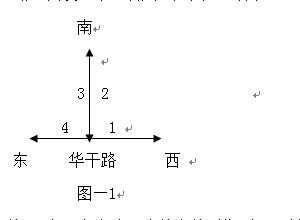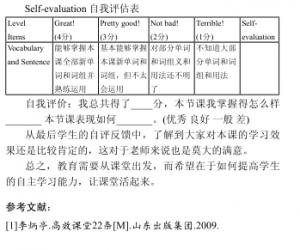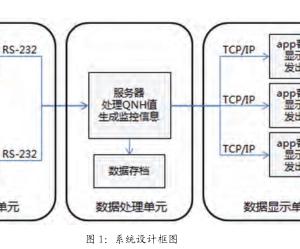Surgical management of spontaneous rupture of primary liver cell carcinoma: a ca
收藏
打印
发给朋友
发布者:Alese O.B.1, Irabor
热度0票 浏览88次
时间:2011年2月19日 09:49
【摘要】 Primary liver cell carcinoma (PLCC) or Hepatocellular carcinoma (HCC) is the most common primary malignant liver tumor in Nigeria. It is a difficult problem in surgery for the diagnosis and therapy of spontaneous liver rupture. The clinical presentation can be varied owing to its clinical signs being usually not specific; therefore, correct diagnosis and management are very important. Without any treatment, the outcome is poor and survival rate is only 10%. Surgeons operate on those patients who present with ruptured PLCC; consisting of packing, hepatic artery ligation and hepatectomy. However, it is often associated with a high mortality rate; as high as 70%, even for the less invasive procedures like packing, argon beam coagulation or hepatic artery ligation. We present a 24?year old lady who had ligation of hepatic artery at an emergency laparotomy for ruptured primary liver cell carcinoma.学术论文发表
【关键词】 Primary liver cell carcinoma; Spontaneous liver rupture; Emergency Laparotomy; Ligation of hepatic artery; Hepatectomy.
Introduction:
Primary liver cell carcinoma (PLCC) or Hepatocellular carcinoma (HCC) is not an uncommon disease in Nigeria. It is the most common primary malignant liver tumor[1]. Worldwide annual incidence of PLCC was estimated to be at least one million new patients[2], whilst its incidence of spontaneous rupture was about 10%[3, 4]. The clinical presentation of PLCC can be varied owing to its clinical signs being usually not specific. Therefore, correct diagnosis and management are very important to prevent invariable mortality from spontaneous rupture of a cancer nodule. At present, it is a difficult problem in surgery for the diagnosis and therapy of spontaneous liver rupture, especially in resource?constrained economies.
Despite the advance in surgical technology, the management of ruptured PLCC is still a challenge to surgeons. Moreover, there has been no randomized control study published on this aspect. The exceptionally good outcome of emergency hepatectomy for ruptured PLCC in some centers may be the result of selection bias. This paper reports on the operative management of a female patient who had hepatic artery ligation for spontaneous rupture of PLCC, and subsequent relevant discussion of the topic.
Case Presentation:学术论文发表
We present a 24?year old female who had an emergency laparotomy via a transverse suprapubic incision, on the 31st of May 2006, based on a preoperative diagnosis of ruptured ectopic pregnancy. She was brought into the hospital on account of sudden loss of consciousness five hours prior to presentation, while running an errand. There was no history of seizure, urinary or faecal incontinence, antecedent trauma or bleeding from the orifices. History of sexual exposure could not be ascertained. Her last menstrual period was said to have been some time in the previous month.
Examination revealed a young lady who was unconscious, markedly pale, not febrile nor jaundiced. Glasgow coma scale (GCS) score was 3/15. The abdomen was distended, but moved with respiration. She had hepatomegaly of 8cm below the right lower coastal margin. Percussion notes were dull. Abdominal paracentesis yielded non clotting blood. Vaginal examination yielded a bulging pouch of Douglas.
The packed cell volume was 16%, whilst the random blood sugar was 121mg/dl. Urinalysis, Liver function tests, Serum electrolytes and urea were normal Intraoperative findings were 3.5 liters of haemoperitoneum, with normal genitourinary system. The anterior surface of the liver was nodular, with bleeding from one of the nodules measuring 10cm in its widest diameter, located across segments IV, V and VIII. There were satellite nodules on the diaphragmatic surface of the liver. There were no enlarged regional lymph nodes. We were thus called by the Gynecologists to join the operation.
The hepatic artery was ligated with No.1 silk suture, at the free edge of the foramen of Winslow. The bleeding resolved after the ligation. An incisional biopsy of one of the hepatic masses was sent for histology: primary liver cell carcinoma with background cirrhosis. She was transfused with five units of blood.学术论文发表
She made an uneventful post operative recovery. Chest x?ray was normal. Liver function tests revealed mildly elevated liver enzymes. An abdominopelvic ultrasound scan done on the first day postoperative showed that the liver was enlarged with a span of 21.8 cm.There was a relatively large hypoechoic mass in the posterior?inferior portion of the right lobe adjacent to the gall bladder and extending to the left lobe. The mass compressed the inferior vena cava. Doppler color flow showed that the mass was relatively hypovascular. All other abdominal organs were normal.
She was discharged home after her stitches were removed on the 9th day to be seen in the surgical outpatient clinic. Abdominal ultrasound scan three weeks postoperative showed that the hepatic mass and the gall bladder had shrunken, with sparing of the left lobe of the liver. She is awaiting right hepatectomy.
Discussion:
It is not uncommon to have spontaneous rupture of the carcinoma as the initial presentation, though operative measures in this situation are often associated with high mortality rates. In the Far East, the rupture rate is as high as 10%, while in Hong Kong the rupture rate is around 9.7%[5].
The diagnosis of ruptured PLCC can be based on two major criteria:
学术论文发表
(1) Clinical presentation of acute abdominal pain, distension, hypotension or shock, as exemplified in the index case. The patient was already in the operating room with a Pfannesteil abdominal incision, based on a preoperative diagnosis of a ruptured ectopic pregnancy. The detection of apparently normal pelvic organs despite the haemoperitoneum prompted the call for general surgeons to ascertain the source of abdominal bleeding.
(2) Radiological findings of a liver tumour with evidence of bleeding ? either frank haemoperitoneum or a subcapsular haematoma[5].
A number of studies have been published in an attempt to reach a consensus on the management of this potential life?threatening condition. Surgeons operate on those patients who present with ruptured PLCC and the treatment is varied, consisting of packing, hepatic artery ligation and hepatectomy. However, surgery is often associated with a high mortality rate; as high as 70%, even for the less invasive procedures like packing, argon beam coagulation or hepatic artery ligation[6, 7].
PLCC occurs mainly in those with liver cirrhosis, with compromised liver reserve, coagulopathy and malnutrition. Thus, postoperative liver failure is not uncommon and is one of the major causes of death. In addition, emergency liver resection for ruptured PLCC often results in unclear tumour resection due to inadequate preoperative work up, which is associated with a high intrahepatic recurrence rate. Because liver function in these cases is generally poor, the principle of treatment is to resuscitate rapidly, control bleeding, resect cancerous tissue and retain as much healthy liver tissue as possible[7,8]. Firstly the vital physical signs and blood loss should be evaluated; secondly the number of tumors, its size, location, invasive range, and the possible presence of cancerous tissue in the portal vein should all be considered. Thirdly, liver function must be assessed, and presence or not of jaundice and ascitic fluid as well as the degree of cirrhosis should be evaluated. The liver function status should be classified according to Child's criterion[9].
学术论文发表
Ligation of hepatic artery is described as follows: When the hepato?duodenal ligament is pulled up near the Winslow pole, the pulse of hepatic artery can be palpated; the artery is then isolated and ligated. It may be prudent to ligate the stem of the hepatic artery in cirrhosis, lest hepatic coma would occur after the procedure. Because blood supply of primary liver carcinoma is mainly by hepatic artery, ligation of hepatic artery can thus block the blood supply and nutrition of the carcinoma. This was well typified by the ultrasound findings of reduced tumor size following the hepatic artery ligation done at the emergency laparotomy. If bleeding can not be controlled by blocking or embolization of hepatic artery, suture should be used in addition, and packing would be the final choice.
Spontaneous rupture is a potentially salvageable
complication of PLCC[10]. Where facilities are available, selected patients may benefit from the multidisciplinary approach of angiographic embolization and delayed resection[11, 12].
【参考文献】
1 Tang S, Chim CS, Lai KN. Diagnosis by Death. Ann Intern Med. 2002; 137 (6): 552?553.
2 Bridbord K. Pathogenesis and prevention of hepatocellular carcinoma. Cancer Detect Prev.1989; 14: 191.
3 Lai EC, Wu KM, Choi TK, Fan ST.Wong J. Spontaneous ruptured hepatocellular carcinoma: an appraisal of surgical treatment. Ann Surg. 1989; 210: 24.
4 Migamoto M, Sudo T, Kuyama T. Spontaneous rupture of hepatocellular carcinoma: a review of 172 Japanese cases. Am J Gastroenterol. 1991; 86: 68.
5 Leung CS, Tang CN, Fung KH, Li MKW. A retrospective review of transcatheter hepatic arterial embolization for ruptured hepatocellular carcinoma. J R Coll Edinb.2002; 47: 685?688.
6 Vivarelli M, Cavallari A, Bellusci R, De Raffele E. Nardo B. Ruptured hepatocellular carcinoma: an important cause of spontaneous haemoperitoneum in Italy. Eur Surg.1995; 161: 881?886.学术论文发表
7 Zhu LX, Wang GS and S Fan ST. Spontaneous rupture of hepatocellular carcinoma. Br J Surg. 1996; 83(5): 602?607.
8 Zhu LX, Geng XP, Fan ST. Spontaneous rupture of hepatocellular carcinoma and vascular injury. Arch surg. 2001; 136: 682?687.
9 Chen ZY, Qi QH, Dong ZL. Etiology and management of haemorrhage in spontaneous liver rupture: a report of 70 cases. World J Gastroenterol. 2002; 8(6): 1063?1066.
10 Tan FL, Tan YM, Chung AY, Cheow PC, Chow PK, Ooi LL. Factors affecting early mortality in spontaneous rupture of hepatocellular carcinoma. ANZ J Surg. 2006; 76(6): 448?452.
11 Buczkowski AK, Kim PT, Ho SG, Schaeffer DF, Lee SI, Owen DA, et al. Multidisciplinary management of ruptured hepatocellular carcinoma. J Gastrointest Surg. 2006; 10(3): 379?386.
12 Dewar GA, Griffin SM, Ku KW, Lau WY, Li AK. Management of bleeding liver tumours in Hong Kong. Br J Surg. 1991 Apr; 78(4): 463?466.
【关键词】 Primary liver cell carcinoma; Spontaneous liver rupture; Emergency Laparotomy; Ligation of hepatic artery; Hepatectomy.
Introduction:
Primary liver cell carcinoma (PLCC) or Hepatocellular carcinoma (HCC) is not an uncommon disease in Nigeria. It is the most common primary malignant liver tumor[1]. Worldwide annual incidence of PLCC was estimated to be at least one million new patients[2], whilst its incidence of spontaneous rupture was about 10%[3, 4]. The clinical presentation of PLCC can be varied owing to its clinical signs being usually not specific. Therefore, correct diagnosis and management are very important to prevent invariable mortality from spontaneous rupture of a cancer nodule. At present, it is a difficult problem in surgery for the diagnosis and therapy of spontaneous liver rupture, especially in resource?constrained economies.
Despite the advance in surgical technology, the management of ruptured PLCC is still a challenge to surgeons. Moreover, there has been no randomized control study published on this aspect. The exceptionally good outcome of emergency hepatectomy for ruptured PLCC in some centers may be the result of selection bias. This paper reports on the operative management of a female patient who had hepatic artery ligation for spontaneous rupture of PLCC, and subsequent relevant discussion of the topic.
Case Presentation:学术论文发表
We present a 24?year old female who had an emergency laparotomy via a transverse suprapubic incision, on the 31st of May 2006, based on a preoperative diagnosis of ruptured ectopic pregnancy. She was brought into the hospital on account of sudden loss of consciousness five hours prior to presentation, while running an errand. There was no history of seizure, urinary or faecal incontinence, antecedent trauma or bleeding from the orifices. History of sexual exposure could not be ascertained. Her last menstrual period was said to have been some time in the previous month.
Examination revealed a young lady who was unconscious, markedly pale, not febrile nor jaundiced. Glasgow coma scale (GCS) score was 3/15. The abdomen was distended, but moved with respiration. She had hepatomegaly of 8cm below the right lower coastal margin. Percussion notes were dull. Abdominal paracentesis yielded non clotting blood. Vaginal examination yielded a bulging pouch of Douglas.
The packed cell volume was 16%, whilst the random blood sugar was 121mg/dl. Urinalysis, Liver function tests, Serum electrolytes and urea were normal Intraoperative findings were 3.5 liters of haemoperitoneum, with normal genitourinary system. The anterior surface of the liver was nodular, with bleeding from one of the nodules measuring 10cm in its widest diameter, located across segments IV, V and VIII. There were satellite nodules on the diaphragmatic surface of the liver. There were no enlarged regional lymph nodes. We were thus called by the Gynecologists to join the operation.
The hepatic artery was ligated with No.1 silk suture, at the free edge of the foramen of Winslow. The bleeding resolved after the ligation. An incisional biopsy of one of the hepatic masses was sent for histology: primary liver cell carcinoma with background cirrhosis. She was transfused with five units of blood.学术论文发表
She made an uneventful post operative recovery. Chest x?ray was normal. Liver function tests revealed mildly elevated liver enzymes. An abdominopelvic ultrasound scan done on the first day postoperative showed that the liver was enlarged with a span of 21.8 cm.There was a relatively large hypoechoic mass in the posterior?inferior portion of the right lobe adjacent to the gall bladder and extending to the left lobe. The mass compressed the inferior vena cava. Doppler color flow showed that the mass was relatively hypovascular. All other abdominal organs were normal.
She was discharged home after her stitches were removed on the 9th day to be seen in the surgical outpatient clinic. Abdominal ultrasound scan three weeks postoperative showed that the hepatic mass and the gall bladder had shrunken, with sparing of the left lobe of the liver. She is awaiting right hepatectomy.
Discussion:
It is not uncommon to have spontaneous rupture of the carcinoma as the initial presentation, though operative measures in this situation are often associated with high mortality rates. In the Far East, the rupture rate is as high as 10%, while in Hong Kong the rupture rate is around 9.7%[5].
The diagnosis of ruptured PLCC can be based on two major criteria:
学术论文发表
(1) Clinical presentation of acute abdominal pain, distension, hypotension or shock, as exemplified in the index case. The patient was already in the operating room with a Pfannesteil abdominal incision, based on a preoperative diagnosis of a ruptured ectopic pregnancy. The detection of apparently normal pelvic organs despite the haemoperitoneum prompted the call for general surgeons to ascertain the source of abdominal bleeding.
(2) Radiological findings of a liver tumour with evidence of bleeding ? either frank haemoperitoneum or a subcapsular haematoma[5].
A number of studies have been published in an attempt to reach a consensus on the management of this potential life?threatening condition. Surgeons operate on those patients who present with ruptured PLCC and the treatment is varied, consisting of packing, hepatic artery ligation and hepatectomy. However, surgery is often associated with a high mortality rate; as high as 70%, even for the less invasive procedures like packing, argon beam coagulation or hepatic artery ligation[6, 7].
PLCC occurs mainly in those with liver cirrhosis, with compromised liver reserve, coagulopathy and malnutrition. Thus, postoperative liver failure is not uncommon and is one of the major causes of death. In addition, emergency liver resection for ruptured PLCC often results in unclear tumour resection due to inadequate preoperative work up, which is associated with a high intrahepatic recurrence rate. Because liver function in these cases is generally poor, the principle of treatment is to resuscitate rapidly, control bleeding, resect cancerous tissue and retain as much healthy liver tissue as possible[7,8]. Firstly the vital physical signs and blood loss should be evaluated; secondly the number of tumors, its size, location, invasive range, and the possible presence of cancerous tissue in the portal vein should all be considered. Thirdly, liver function must be assessed, and presence or not of jaundice and ascitic fluid as well as the degree of cirrhosis should be evaluated. The liver function status should be classified according to Child's criterion[9].
学术论文发表
Ligation of hepatic artery is described as follows: When the hepato?duodenal ligament is pulled up near the Winslow pole, the pulse of hepatic artery can be palpated; the artery is then isolated and ligated. It may be prudent to ligate the stem of the hepatic artery in cirrhosis, lest hepatic coma would occur after the procedure. Because blood supply of primary liver carcinoma is mainly by hepatic artery, ligation of hepatic artery can thus block the blood supply and nutrition of the carcinoma. This was well typified by the ultrasound findings of reduced tumor size following the hepatic artery ligation done at the emergency laparotomy. If bleeding can not be controlled by blocking or embolization of hepatic artery, suture should be used in addition, and packing would be the final choice.
Spontaneous rupture is a potentially salvageable
complication of PLCC[10]. Where facilities are available, selected patients may benefit from the multidisciplinary approach of angiographic embolization and delayed resection[11, 12].
【参考文献】
1 Tang S, Chim CS, Lai KN. Diagnosis by Death. Ann Intern Med. 2002; 137 (6): 552?553.
2 Bridbord K. Pathogenesis and prevention of hepatocellular carcinoma. Cancer Detect Prev.1989; 14: 191.
3 Lai EC, Wu KM, Choi TK, Fan ST.Wong J. Spontaneous ruptured hepatocellular carcinoma: an appraisal of surgical treatment. Ann Surg. 1989; 210: 24.
4 Migamoto M, Sudo T, Kuyama T. Spontaneous rupture of hepatocellular carcinoma: a review of 172 Japanese cases. Am J Gastroenterol. 1991; 86: 68.
5 Leung CS, Tang CN, Fung KH, Li MKW. A retrospective review of transcatheter hepatic arterial embolization for ruptured hepatocellular carcinoma. J R Coll Edinb.2002; 47: 685?688.
6 Vivarelli M, Cavallari A, Bellusci R, De Raffele E. Nardo B. Ruptured hepatocellular carcinoma: an important cause of spontaneous haemoperitoneum in Italy. Eur Surg.1995; 161: 881?886.学术论文发表
7 Zhu LX, Wang GS and S Fan ST. Spontaneous rupture of hepatocellular carcinoma. Br J Surg. 1996; 83(5): 602?607.
8 Zhu LX, Geng XP, Fan ST. Spontaneous rupture of hepatocellular carcinoma and vascular injury. Arch surg. 2001; 136: 682?687.
9 Chen ZY, Qi QH, Dong ZL. Etiology and management of haemorrhage in spontaneous liver rupture: a report of 70 cases. World J Gastroenterol. 2002; 8(6): 1063?1066.
10 Tan FL, Tan YM, Chung AY, Cheow PC, Chow PK, Ooi LL. Factors affecting early mortality in spontaneous rupture of hepatocellular carcinoma. ANZ J Surg. 2006; 76(6): 448?452.
11 Buczkowski AK, Kim PT, Ho SG, Schaeffer DF, Lee SI, Owen DA, et al. Multidisciplinary management of ruptured hepatocellular carcinoma. J Gastrointest Surg. 2006; 10(3): 379?386.
12 Dewar GA, Griffin SM, Ku KW, Lau WY, Li AK. Management of bleeding liver tumours in Hong Kong. Br J Surg. 1991 Apr; 78(4): 463?466.






















